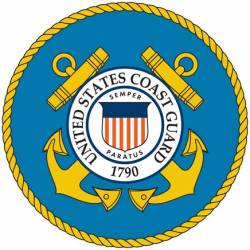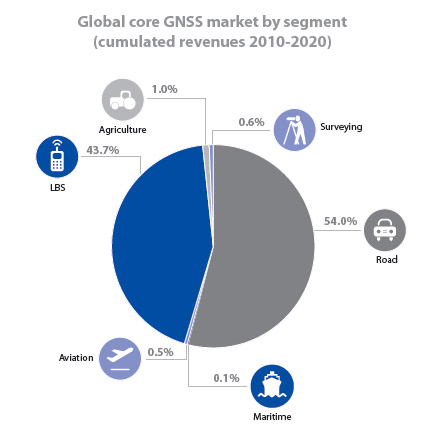A shift in the Air Force’s acquisition plan should shave a year off the time needed to finish development of new M-code–equipped receivers and potentially inspire more commercially flavored innovation — and perhaps even the entry of new vendors.
The new approach enables the Pentagon to fulfill a congressional mandate to buy only M-code receivers after fiscal year 2017 and could help convince the user community, jaded by previous delays, to speed adoption of the more resilient devices.
A shift in the Air Force’s acquisition plan should shave a year off the time needed to finish development of new M-code–equipped receivers and potentially inspire more commercially flavored innovation — and perhaps even the entry of new vendors.
The new approach enables the Pentagon to fulfill a congressional mandate to buy only M-code receivers after fiscal year 2017 and could help convince the user community, jaded by previous delays, to speed adoption of the more resilient devices.
Once in place the M-code receivers will give users access to a higher-power signal that is more resistant to jamming and interference and employs improved message formats and signal modulation techniques that make it both faster and more accurate. The M-code also has advanced security features aimed at preventing unauthorized access or exploitation by adversaries.
The Air Force has struggled to bring the M-code receiver program along in parallel with the space and ground segments of its GPS modernization program. Congress became sufficiently concerned about lagging receiver development that it directed military acquisition managers to buy only M-code– capable equipment starting in fiscal year 2018. More specifically, the managers had to buy M-code receivers if they were available — and for a while it looked as though they wouldn’t be.
The GPS Directorate, however, has condensed the development timeline for the new M-code chips by combining some of the steps in the development process.
“Previously we had planned to use a classical system acquisition approach,” explained Lt. Col. James Wilson, program manager for the Military GPS User Equipment (MGUE) program.
That strategy would have had the military working with contractors through an extensive step-by-step process laced with tests to first do the systems engineering and then develop and finalize a design. They would then mature the manufacturing line, test it with low production runs — then test it further until approval was finally granted to begin full production.
Shortening the Design Cycle
The production lines, however, are the same ones the program is currently using to produce the Selective Availability Anti-spoofing Module or SAASM cards. With a large part of the work already done and thoroughly tested, the program was able to condense some of the steps.
“We were able to leverage those manufacturing lines,” Wilson told Inside GNSS. “We were basically able to combine the technology development (step) with the engineering development manufacturing phase.”
“We’ve been involved with the GPS Directorate for several years now maturing M-code,” said Al Simon, marketing manager for navigation products within government systems at Rockwell — one of the MGUE contractors. “Recently the government has decided that they wanted to try to accelerate the delivery of M-code user equipment; so, they kind of stopped the (engineering and manufacturing) program . . . and they basically extended the current program that we were on, which is called a technology development phase.”
Simon said defense officials announced that they would fund work for roughly another year at the end of which vendors were to give them what they had developed to that point so that they could assess their progress.
“We’re on contract now to deliver receivers in August 2015,” he said. “That’s the path they’ve put everybody on now.”
Wilson said they expect the new approach to get GPS receivers to the program offices for installation a lot faster. He also believes he will have more choices when it comes to purchasing the receiver cards.
“We anticipate that we will have more options, meaning more vendors to produce those circuit cards for those platforms,” Wilson said during an interview. “So, this allows the platform program offices to benefit from competition among multiple GPS receiver card developers. And we’re really leveraging this market-driven strategy. (It’s) similar to what the commercial marketplace does where they have a capability being developed by multiple vendors and then you can go out and buy the cheapest one that meets your needs.”
“They weren’t going to go ahead and allow the chip to go to the manufacturers until they had three demonstrations,” said a source familiar with the program, “and now they’re going to allow the chip to go to all the manufacturers as soon as they get done with the certification of the chip.”
Calling All Vendors
The program currently has three vendors in place developing MGUE receivers for specific “pathfinder” platforms — Rockwell, L3/Interstate Electronics Corporation, and Raytheon. The MGUE program would put any new entrants through a process to verify that they meet the program’s security requirements and certify that their receiver is compatible with the M-code signal.
“Once they have their products available, they would be able to bring those in, do the security and compatibility certification process, and then, once they’re certified, they will be able to go out and provide their products to a number of platforms,” Wilson said.
“Anybody,” said the well-informed source, “that can meet the technical specifications, that they verify, is going to be in a position where they can say, ‘Why, I want to go out and sell to the Marine Corps a much better device than the PLGR [Precision Lightweight GPS Receiver] is.’ It opens up the entrepreneurial juices in a way that we’ve been arguing for years. Up until this point in time, as you well know, for each of these prior systems it’s been a single contractor, which has been a disaster.”
New manufacturers interested in the program should contact the GPS Directorate, said Wilson, “and we would give them the requirements to meet security and compatibility qualification.” Those requirements are not finalized, he said, but will be soon and interested parties should feel free to contact the GPS Directorate now. “We’re still working on it. We anticipate security compatibility certification process to be in place and producing certified solutions by the end of fiscal year 2015.”
Whether the competition is between new entrants and incumbents or strictly between the three current vendors, Wilson is hoping the companies’ desire to win will be reflected in improvements in size, weight, and power, a greater ability to resist jamming, improved efficiencies found in “lean manufacturing,” and in the intelligent reuse of work already done in other programs.
“But also the [Federal Aviation Administration] uses GPS as well,” Wilson pointed out, “and the processes that they go through for certifying and having software that performs certain functions for the civilian airline industry, for instance — they are bringing in those same type of software and bringing it into the military application because we fly our military aircraft in the civilian airspace for instance — so, you wouldn’t have to redo that software. We would just go through and make sure the certification of it is correct. That would be an example of us leveraging commercial technology.”
This new approach to acquisition will be the MGUE program’s way of doing business going forward, Wilson told Inside GNSS. “For the program this is a permanent change as far as our acquisition (goes).”
The new tack is not without risks, noted an expert familiar with the Defense Department’s efforts to upgrade its receivers: “If something goes wrong then the finger-pointing will be enormous.”
But if all goes smoothly, the program could prove out the condensed development approach in such a way that makes it attractive to other defense managers.
Platform Dynamics
The MGUE program is developing two receiver circuit cards — one for ground-based equipment such as radios, handheld devices, and troop transports and one for aviation and maritime use.
The difference has to do with dynamics, explained Wilson. “The ground-based card has lower to medium dynamics . . . that’s just how fast the card moves around. And then the aviation and maritime card is a high-dynamic card and that has to do with what we call pulling G’s that the airplane world talks about. So if you are moving really quickly the receiver has to keep up with the GPS signals from space.”
One program, however, won’t take priority over the other, Wilson told Inside GNSS. “We are actually moving in parallel with both the ground and the aviation/maritime circuit cards at the same time.”
The ground circuit card should be able to support an effort underway at the Army’s Aberdeen Proving Ground to reduce the amount of weight a warfighter needs to carry by developing a hub that provides position, navigation, and timing (PNT) information to multiple devices. Unmanned aerial vehicles or UAVs don’t move all that fast; so, they also will be able to use the ground-based cards, said Wilson.
An unmanned aircraft is among the MGUE program’s four lead platforms — one platform chosen by each service — to “test out this capability,” said Wilson. “The Army brought forth the Raven which is a UAV, an unmanned aerial vehicle — it’s a hand-launched UAV. The Marine Corps brought forth the Joint Light Tactical Vehicle. The Air Force designated the F-15 E as their lead platform. The Navy they would use the Arleigh Burke-class destroyer as their lead platform.”
The lead programs serve as both technology drivers and as markers for progress towards completion of the MGUE program. Each program presents particular challenges that will spur improvements in the receivers, suggested Wilson. The Raven, for example, has particularly constrained size, weight, and power requirements.
“So, that drives you to produce something that can fit in there and meet those (requirements),” Wilson explained. “Or something like the F-15 E — you’re looking for something that has a lot of high dynamics. That aircraft can move quickly, provide weapons to the ground as well as some air-to-air capability; so, you’re wanting to see that you can provide that position, navigation, and timing coming out of the card in all environments.”
To be sure that they meet the deadline Wilson said they will do the test and integration work on the four lead platforms in 2016, wrapping it up by 2017. Completion of the work is a “diploma” of sorts, showing that the MGUE program has accomplished its task and has receivers that are ready for purchase across all programs.
“The four lead platforms are our way of proving out that we are ready for all the other platforms,” said Wilson.
Installation of the receivers will start right away, Wilson said, but there is no mandate to force a broad retrofit of military platforms.
“It is not a goal to update all the current equipment to M-code. It is more that M-code equipment will flow into the inventory as a sustainment replacement,” Wilson explained. Although in some cases officials may determine that a small number of systems need to be updated quickly, most systems will be upgraded when they come in for regularly schedule maintenance. Updating should be relatively easy as the new receiver cards will be the same size and shape as the SAASM cards, enabling programs to swap one card for another.
In a few cases cards will have to be specially designed to meet the needs of the equipment. An example of this would be precision guides munitions (PGMs). “The PGM, just being smaller and that type of thing, and (given) the environment it works in, will probably need a different circuit card design and software specific for it,” said Wilson.
The handheld devices used by warfighters might also need specially designed circuit cards but, in both that case and in the case of the PGMs, they would still use the same application-specific integrated circuit, or ASIC, as all the other cards.
“We typically throw the handheld into that same category [as the PGMs],” said Wilson, “although the Army may be able to use our existing [ground] receiver card.”
Progress or Recess?
Although the MGUE program still has a good way to go, lawmakers in the House, at least, appear to be more comfortable with its progress.
The House Armed Services Committee agreed to authorize full funding for the program, giving it the $156.66 million that the White House had requested. They also elected to drop language from a report accompanying the FY15 National Defense Authorization Bill (H.R. 4335) that would have required defense officials to detail their progress on deploying M-code.
But convincing Congress may not be the MGUE program’s big challenge.
Another source familiar with the military’s efforts, suggested that at least some of the managers of the Department of Defense’s many platforms and programs are not all that enthusiastic about shifting to M-code. This lack of enthusiasm in not because the managers don’t recognize the advantages, said the source, but because it takes so long to develop and put equipment into place. From their perspective, they only just got the SAASM cards in place and functioning.
“There are people in the military arena, in the DoD arena, who basically say ‘It just seems to take forever’ and ‘Why don’t we just stick with what we have?’” said the source. There were growing pains during the deployment of the SAASM card, the expert said, and it took a while before managers were comfortable employing the receivers in user equipment.
This source told Inside GNSS that some defense officials had suggested they might just ignore the M-code receivers.
“We finally have P/Y-code working well with the hardware we’ve been trying to get for a very long time,” the source said, summarizing their concerns, “and now that we’ve just finally got that going well, we’re not going to make a big shift again — maybe for a very long time.”
The view is not a criticism of the chip designers or the product designers, said the expert, but a reflection of the stresses inherent in the acquisition process and in taking on something new — especially given that it will be some time before all the GPS satellites are broadcasting M-code.
Roughly a third of the operational satellites now on orbit have M-code capability.
“It’s a chasing-your-tail kind of situation where a lot of the users are saying ‘M-code is not ready because we don’t have all the satellites with M-code, and the hardware isn’t available to you, and we just got SAASM going. Why don’t we just cool our engines and wait?”
“It’s slowing down the advantages of using M-Code,” the source said, “because there is not any rush to adopt it.”






